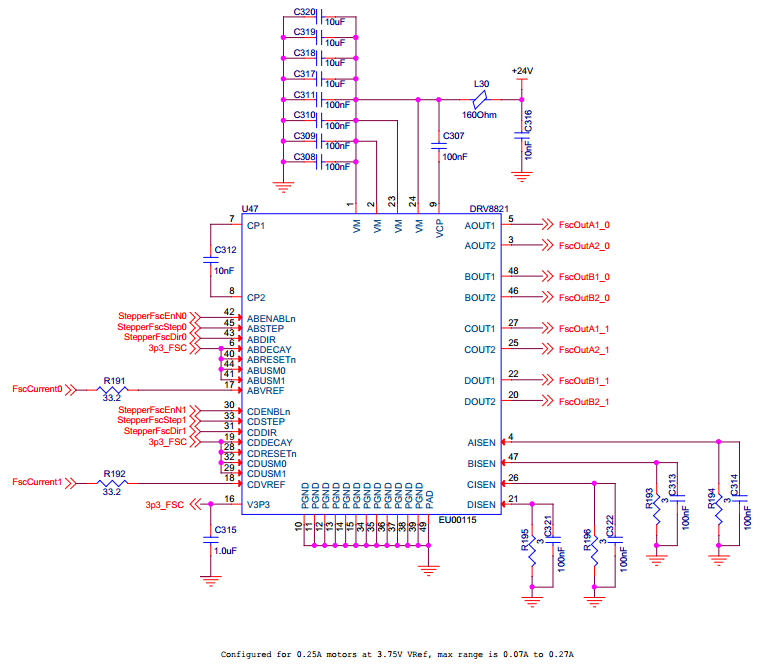We use multiple DRV8821 components in one of our systems and we are evaluating a new motor for use on one of the circuits. The circuit is configured for a maximum of 0.27A by using a 3Ohm resistor (with 100nF cap across it) on the sense pin. Our original motor worked generally fine and has had very few issues with false tripping of the over current circuit. However, in testing of the new motor we get over current tripping within 5 to 10 seconds of operation. I feel confident it is over current tripping because the power must be cycled to return it to operation, and the chip itself does not feel warm or measure warm with an IR thermometer.
The original motor had 7.2mH of inductance and the new motor has 11mH. VREF input has been tested at 3.5V and 4.0V. At 3.5V it may be lasting slightly longer before it trips. Current probing doesn't show anything of interest, the motor traces look like I would expect and I can see no difference between them. With the original motor we have had a couple of boards where running the motors continuously for days would cause the over current to trip, but those have been quite minor. Having them never trip would be better, but it was at a level that could be lived-with. However, tripping within 5-10 seconds now has me hunting for a solution.
Relevant schematic portion is below.
Are there any other things that could be tripping this? Since it is configured for a maximum of 0.27A, which I have confirmed by scope with a current probe, I am a bit stumped as to why it would be tripping.
Thanks for your help!
Dan


